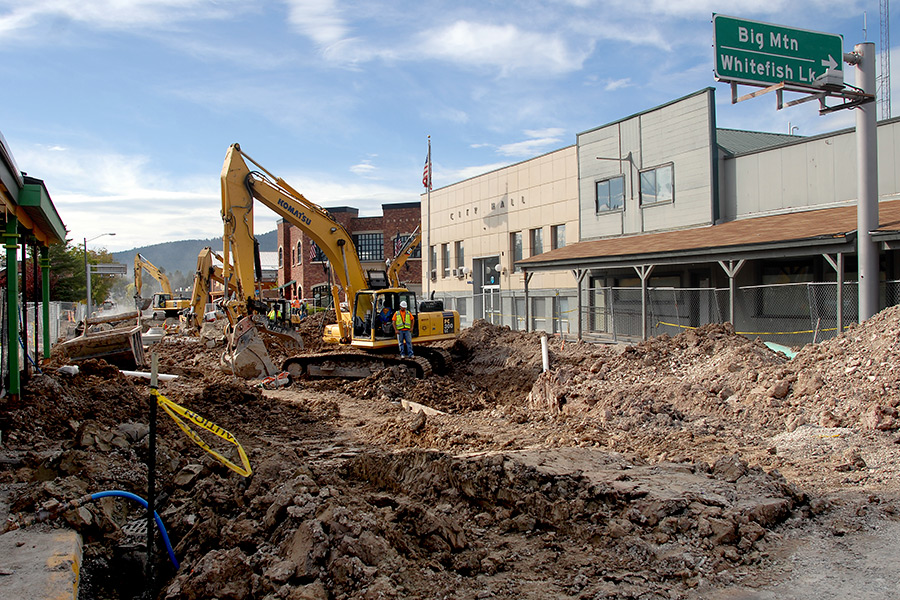Montana’s schools are crumbling, its roads are falling apart and its wastewater infrastructure cannot meet the demands of a growing population. That’s the stark message from a panel of civil engineers, which gave Montana’s infrastructure a “mediocre” C-minus in an infrastructure report card issued this month by the Montana Section of the American Society of Civil Engineers.
The report card, released on Nov. 18, reviewed the condition of Montana’s schools, roads, dams, transit systems and water and wastewater systems. The report suggests the state create a long-term plan to better fund infrastructure improvements in the future.
“When a roofer suggests you replace your roof you do it and that’s what this report is telling us,” said Billings Mayor Thomas W. Hanel, who spoke during a teleconference about the report’s release.
While the state received a cumulative grade of a C-minus, the panel, which included 30 civil engineers from the public, private and non-profit sectors, also individually graded Montana’s schools, wastewater systems, dams, drinking water systems, irrigation canals and waterways, transportation, transit and solid waste. Most areas received a C. Solid waste systems performed the best with a B-minus. But schools and wastewater systems did the worst, receiving a D-minus and D-plus respectively.
According to the report card, of the more than 2,000 schools in Montana, 66 percent of them showed signs of damage and wear and had various environmental issues. The report’s authors said that those environmental issues often lead to increased energy costs.
Wastewater systems were another sticking point for the panel. Of the 180 treatment systems in the state, 20 percent of the publically owned facilities have significant violations against them and another 20 percent are trying to correct violations. The report stated that at the current rate of repair, it would take 70 to 90 years to replace everything. During the teleconference, report card committee chair Melissa Matassa-Stone mentioned the city of Polson and the improvements it needs to make to its wastewater system as an example of what is happening elsewhere in the state.
The state’s transportation infrastructure, including roads and bridges, received a C, in part because of the number of improvement projects waiting for funding. According to the report, 46 percent of the state’s major roads are in poor or mediocre condition and 40 percent of gravel roads are in poor or failed condition. The report estimates that rough roads cost the average Montanan anywhere from $292 to $484 in extra maintenance costs.
“We can’t just wait for Montana’s infrastructure to break before we replace it,” Matassa-Stone said.
The report concludes that Montana should find additional sources of funds for capital improvement and support federal funding programs, like the Highway Trust Fund. The Highway Trust Fund came dangerously close to running out of money earlier this year and, had it gone dry, its impact could have been felt locally, including at Flathead County’s Eagle Transit, which relies on federal dollars to operate. The report says the state should do more to encourage public participation in infrastructure projects and to educate the public on the importance of these projects.
Matassa-Stone said that there were some strong points for the state – for example, road improvement projects in Whitefish. She added that it was important to look at the report card as an overview of the state’s infrastructure, not a list of projects that need attention.
In a statement to the Beacon, Gov. Steve Bullock’s deputy communication’s director, Mike Wessler, said the administration had seen the report and agreed that infrastructure improvements are necessary in the state.
“Governor Bullock recognizes that a reliable infrastructure is key to a strong economy, which is why he’s proposed making critical upgrades to roads, wastewater facilities, schools and broadband infrastructure,” Wessler said. “The Governor’s plan will build on his record of strong fiscal management by using a mixture of cash and low-interest bonds to make these upgrades while ensuring Montana continues to have a healthy rainy day fund for unexpected things that might come our way – be it fires, floods or a federal government shutdown.”
